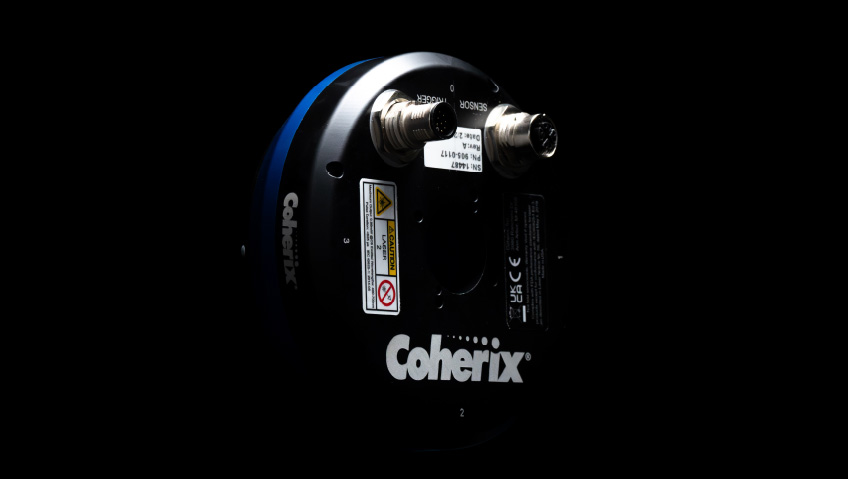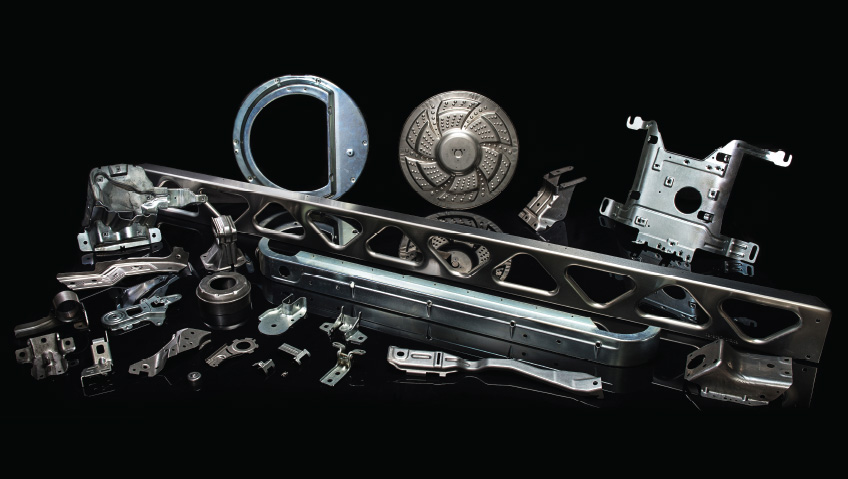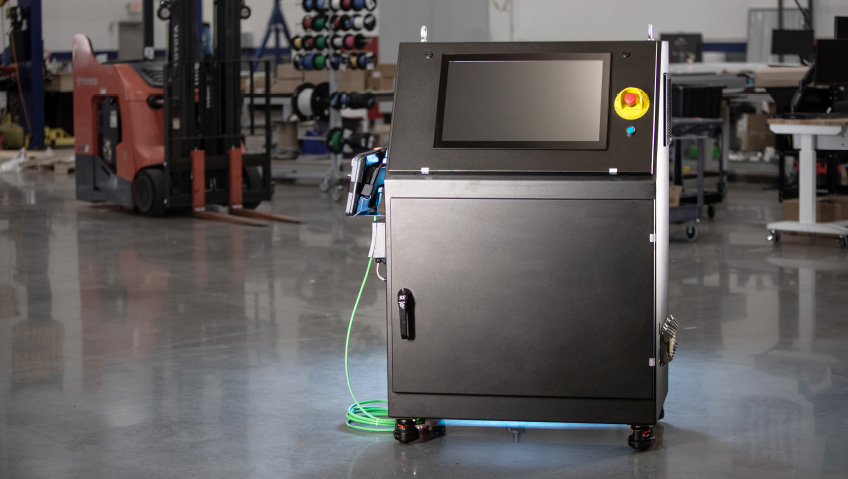Coherix, Inc. has expanded its workforce and product line and embraced Artificial Intelligence (AI) in a big way since Manufacturing in Focus last profiled the firm in January 2023. However, the Ann Arbor, Michigan-based company has not deviated from its central mission to design and create 3D machine vision systems and Adaptive Process Control (APC) solutions for the adhesive and sealant dispensing markets.
“We are focused 100 percent on precision dispensing,” notes company Founder, Chair, and CEO, Dwight Carlson.
Consistency, perfection, precision
Coherix’s systems, sensors, and software are used to monitor and inspect industrial dispensing processes to ensure “consistency, perfection, and precision” are maintained—even in advanced applications like cutting-edge “lights out” fabrication. And impressive as Coherix’s products are, the company hasn’t forgotten the importance of the human element. Since our previous profile, Coherix has launched new training programs, workshops, and academic initiatives.
The company primarily serves the automotive and electronics industries (the company counts roughly 150 auto OEMs and Tier 1 suppliers as clients), as well as dispensing equipment manufacturers and system integrators. At present, Coherix is preparing to relocate to a larger facility in its hometown, expanding its footprint from 15,000 to upwards of 25,000 square feet. If all goes to plan, the Coherix Innovation Center, a space featuring an array of robotic systems and dispensing equipment for training and research, will triple in size following the move.
“We provide a tremendous amount of value by having the major robot manufacturers and all the dispenser manufacturers bringing in new things, testing them, and then briefing the industry on what’s what,” says Carlson. “We gain a lot of credibility. We’ve got the best team in the world in terms of dispensing systems engineers.”
When our previous profile appeared, the company was preparing to launch the Coherix 3D Mini, designed for use with mini-dispensing machines. This cutting-edge inspection/process control system can examine and report on the width, height, volume, and location of mini-beads as small as 0.2 to 3.5 mm. Newer products from the team include third-generation Coherix 3D sensors, which provide adaptive bead path monitoring during dispensing processes, real-time defect correction, and the processing power to enable AI-backed analytics. They have four times more physical memory than Gen 1 Predator3D sensors, resulting in faster processing, and boast protective hardware that reduces wear and tear while safeguarding sensors from splatter from materials. Storage has been increased tenfold so users can save more data from 3D scans.
“Now we can write the kind of algorithms that can really make this sing for the customer,” says Carlson of the new and improved Gen 3 sensors.
Service as value
Coherix backs all of these solutions with a strong commitment to customer service. “A lot of inspection products go into plants and don’t provide value… We don’t want our product in a plant if it’s not providing value,” Carlson says.
To achieve this, the team runs a comprehensive support program called Coherix CARES to ensure its products provide value to customers. Under the terms of this program, Coherix staff make quarterly visits to client worksites. Once on site, Coherix personnel test equipment and train staff, aiming to enhance plant efficiency, maintain consistency during dispensing operations, and reduce waste. Videos are made and presented to the client to highlight any dispensing variances.
“If you’re not getting any variation, no problem. If the bead is exactly in the right place every time, you don’t need anything else,” Carlson explains. On the other hand, if “the volume starts varying, and we can see it in these dynamic videos, we say, ‘Okay. We can fix that for you.’ We can put in our volume adaptive control. We can adjust the dispenser to make sure that the volume doesn’t vary, the process doesn’t vary outside the control limits.”
Coherix uses Adaptive Process Control (APC) technology to help establish these control limits. APC automates the control of industrial processes and adjusts parameters when necessary to ensure consistency and precision. Coherix 3D Lateral Tracking is an APC-enabled software solution that monitors and corrects bead position in dispensing operations. The product also offers feedback and can be integrated within an existing robotic dispensing system.
“Our target is to eliminate 90 percent of the dispensing downtime—we’d say 100 percent, but we want to be conservative,” says Carlson.
In addition to Coherix CARES, the company hosts regular workshops and training sessions. Total Dispensing System Engineering (TDSE) workshops led by moderator/engineer Terry Taylor are held at the current Coherix Innovation Center. Attendees come from robotics firms, dispensing equipment manufacturers, systems integrators, OEMs, Tiers, and the like. In a typical workshop, Taylor outlines technological developments and industry trends and discusses solutions to adhesive and sealant dispensing issues. TDSE workshops offer “very high-value information. We talk about how you can get to autonomous dispensing,” Carlson shares.
Open training sessions
While TDSE events cover the industry in a general way, Coherix also holds Open Training Sessions that are specifically focused on its own solutions. Clients attending these sessions receive instruction on everything from generating 3D adhesive bead renderings to establishing inspection paths for total coverage, loading and backing up projects, adding templates, and importing scan data.
“In these Open Training Sessions, people come in and learn about our systems. Engineers can come in. Usually, we charge for training like this, but we’re offering it for free to build those relationships,” explains Josh Anton, Marketing Communications Manager at Coherix.
For instance, Coherix has formed a partnership with the GameAbove College of Engineering and Technology at Eastern Michigan University (EMU) to spread knowledge about dispensing solutions. In a joint initiative, EMU mechanical engineering students will undertake intensive training in a university facility stocked with equipment provided by Coherix, Sames, Kawasaki Robotics, and Gonzalez Group. “When these kids graduate, they want a job; they want to be engineers and get their hands dirty. It works out great for us and other members of the EMA,” says Carlson.
The EMA is the Engineering and Manufacturing Alliance, a “not-for-profit corporation that promotes, facilitates, and enables research and education of dispensing systems engineering,” according to the group’s LinkedIn profile. Coherix is a strong backer of the EMA, with some of its staff playing important roles in the Alliance.
Artificial Intelligence represents a trend that engineers and manufacturers alike are watching very closely, and Coherix has been experimenting with AI, primarily with regard to machine learning. Carlson explains AI could help take factories to a level where skilled workers aren’t so essential. This could be a boon, given that existing workers in skilled professions are approaching retirement age and young people aren’t clamoring to replace them.
“What you’re shooting for is autonomous dispensing in lights-out conditions,” he says. “That’s the way we see it. We’ve got to get these plants fitted with AI-enabled automation. Any leader in automation manufacturing knows you have to get this stuff AI-enabled.”
Global presence
An international corporation, Coherix maintains operations in China, Japan, Europe, Mexico, and the Asia Pacific. And with an eye to the future, the company has already selected new regions for possible expansion. “We have Brazil, India, and Korea right on our radar. We’re doing business there, but we haven’t formed a wholly owned subsidiary,” says Carlson.
Despite its global presence, Coherix is still a relatively small company and thanks to its diminutive size, is nimbler and more adaptable than most high-tech giants, says Carlson. “With 85 to 90 people, you can really focus and move the ball fast,” he notes.
This does not entail broadening the company’s reach into brand-new markets, however. Some Coherix channel partners have implemented the company’s technology in sectors as diverse as residential glass and military supplies, but for its part, Coherix is sticking closely to the automotive and electronics markets.
Of course, the auto sector, along with the broader economy, has experienced some turbulence recently. “First of all, there came COVID. Then came the collapse of the electric vehicle in America. And now we have the Trump tariffs,” says Carlson, in response to a question about challenges facing the firm.
Agile, flexible, and tough
So far, Coherix has made it through, with the team able to source sufficient supplies of scarce semiconductor chips during the pandemic and benefiting from increased EV sales in Europe, even as electric vehicles lost popularity in America.
“You really have to be agile and flexible and tough,” notes Carlson, displaying the kind of attitude that will no doubt help steer the business through current economic maelstroms.
In fact, Carlson envisions a bright future: “We expect a 25 percent revenue increase this year. In 2029, we plan to be a little over $100 to $103 million,” he says. It’s not all about money, however: “Some exciting things are going on in the industry. And we’re going to get to lights-out automation,” he adds, with some obvious excitement himself.





